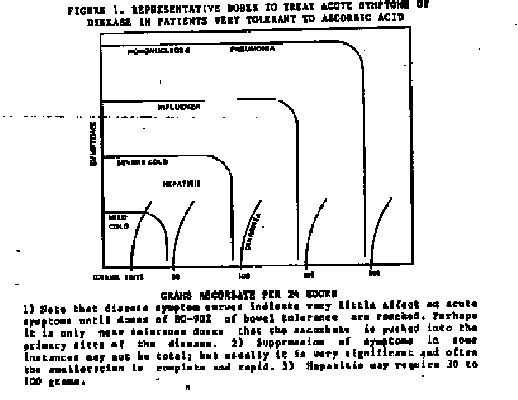

CONDITION GRAMS PER NUMBER OF DOSES
24 HOURS PER 24 HOURS
normal 4 - 15 4
mild cold 30 - 60 6 - 10
severe cold 60 - 100 8 - 15
influenza 100 - 150 8 - 20
ECHO, coxsackievirus 100 - 150 8 - 20
mononucleosis 150 - 200+ 12 - 25
viral pneumonia 100 - 200+ 12 - 25
hay fever, asthma 15 - 50 4 - 8
environmental and
food allergy 0.5 - 50 4 - 8
burn, injury, surgery 25 - 150 6 - 20
anxiety, exercise and
other mild stresses 15 - 25 4 - 6
cancer 15 - 100 4 - 15
ankylosing spondylitis 15 - 100 4 - 15
Reiter's syndrome 15 - 60 4 - 10
acute anterior uveitis 30 - 100 4 - 15
rheumatoid arthritis 15 - 100 4 - 15
bacterial infections 30 - 200+ 10 - 25
infectious hepatitis 30 - 100 6 - 15
candida infections 15 - 200+ 6 - 25

 TITRATING ...
TITRATING ...
 INTRODUCTION
INTRODUCTION
 BEGINNING
BEGINNING